Padmasambhava, aka Guru Rinpoche or the Second Buddha, is an iconic figure in Bhutan celebrated particularly during the religious dancing festivals named tsechus.
Guru Rinpoche is credited to have healed the dying king Sindhu Raja in Bumthang Valley in the 8th century. Grateful, the latter facilitates then the teaching of Buddhism in his kingdom. Consequently, Guru Rimpoche runs the first tshechu in Bumthang, which presents eight types of dances symbolising his eight Buddhist incarnations.
Nowadays, tshechus commemorate the life and deeds of Guru Rimpoche, and aim to exorcize evil influences and to ensure good fortune in the coming year. Run over up to four consecutive days, they are held annually on the tenth day of a month of the lunar Tibetan calendar.
Thimphu’s tsechu
My journey in Bhutan coincides with was the 2015 Thimphu tsechu. Having enjoyed a local tsechu held in Punakha District, I cannot wait for the biggest religious gathering of the year in Bhutan. Early morning, people converge to Thimphu’s dzong located close to the royal residence.
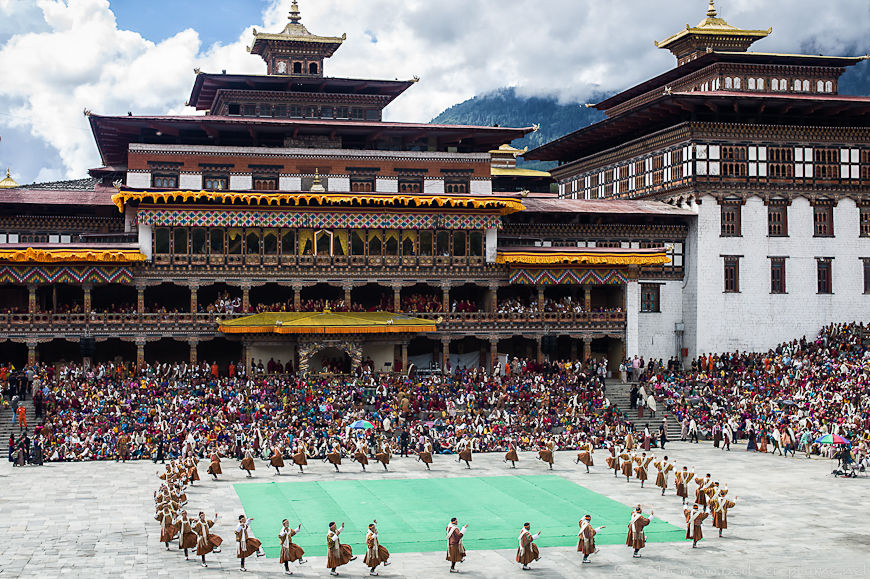
Tshechus feature the unfurling of a thongdrel – a very large appliqué depicting a seated Padmasambhava surrounded by lamas. Devotees gather to offer obeisance and to seek blessings. Viewing the thongdrel is said to cleanse of sin.
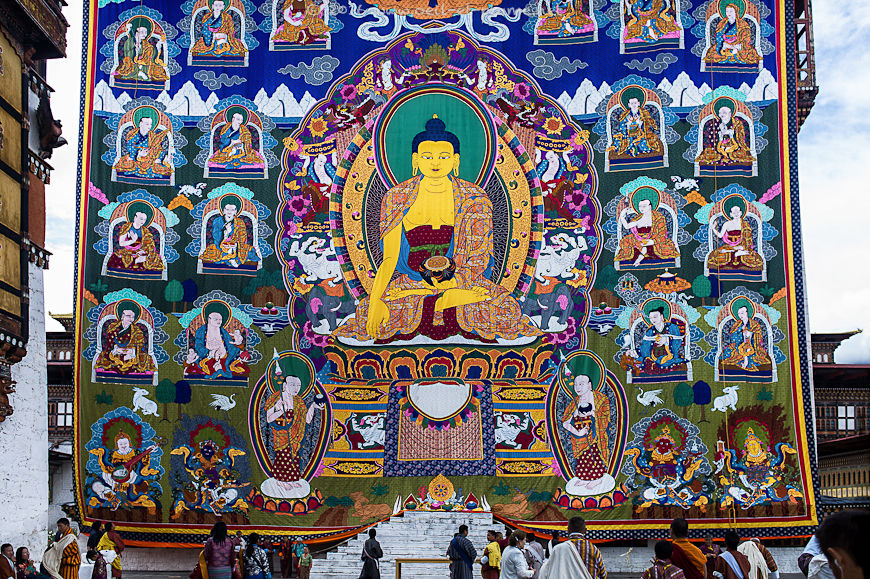
Thongdrels are composed of several layers, mostly of silk. The image consists in appliqué pieces sewn to a background.
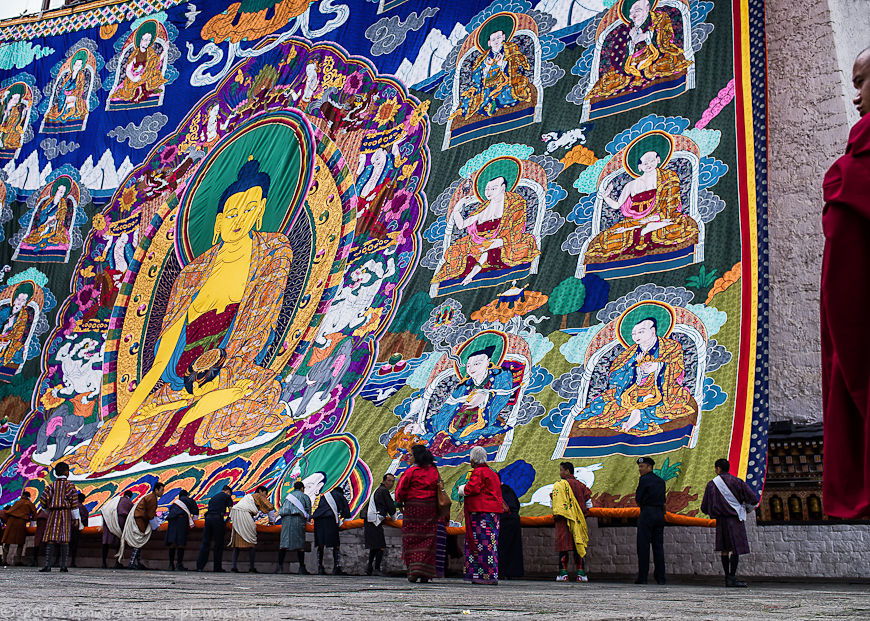
Not to be exposed to broad daylight, the massive thongdrel is displayed in the evening and rolled up in the morning. A yellow drape covers and protects the roll when not on display.
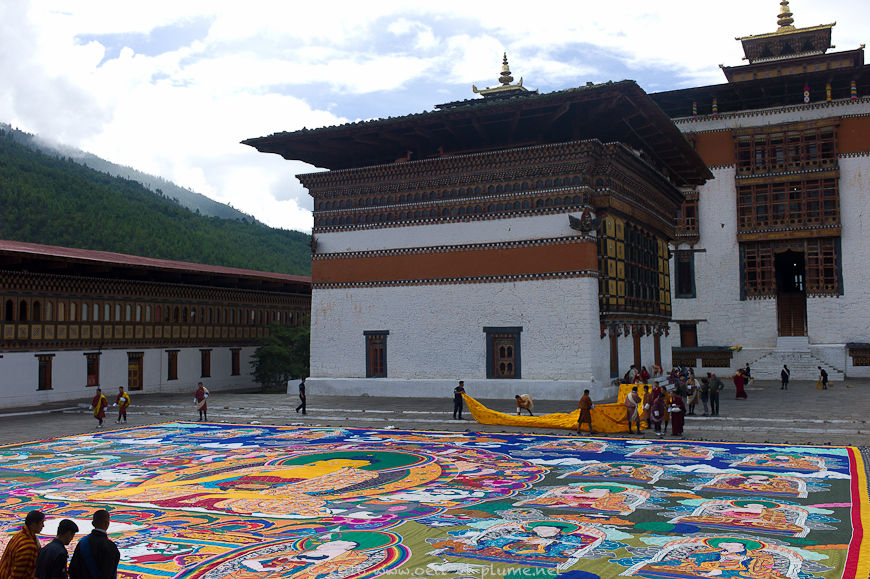
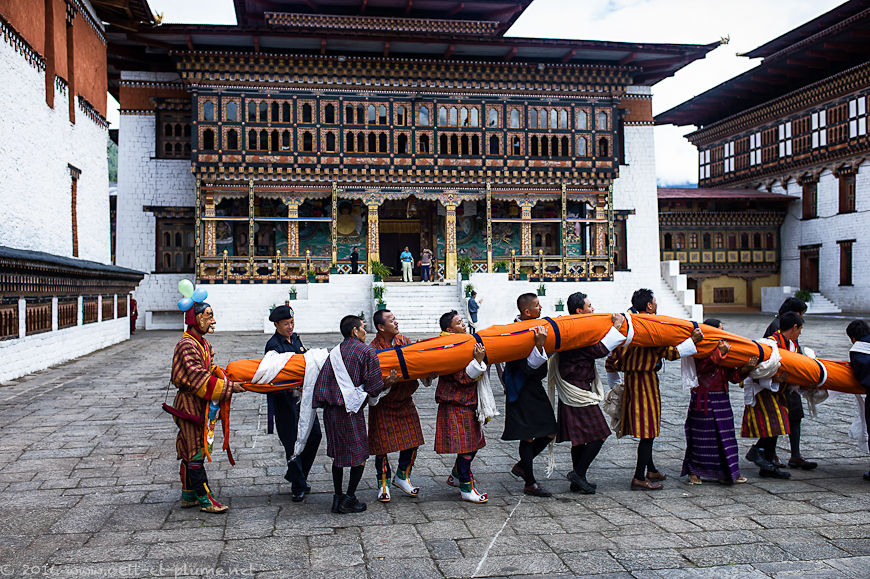
Tsechus are also large social gatherings amongst residents of the district and beyond. People dress up, keen to display their best attires. You better be patient, as the festival runs throughout the day. Despite the morning heat, my camera crisscrosses the colourful audience to shoot old and youg, male as female attendees.
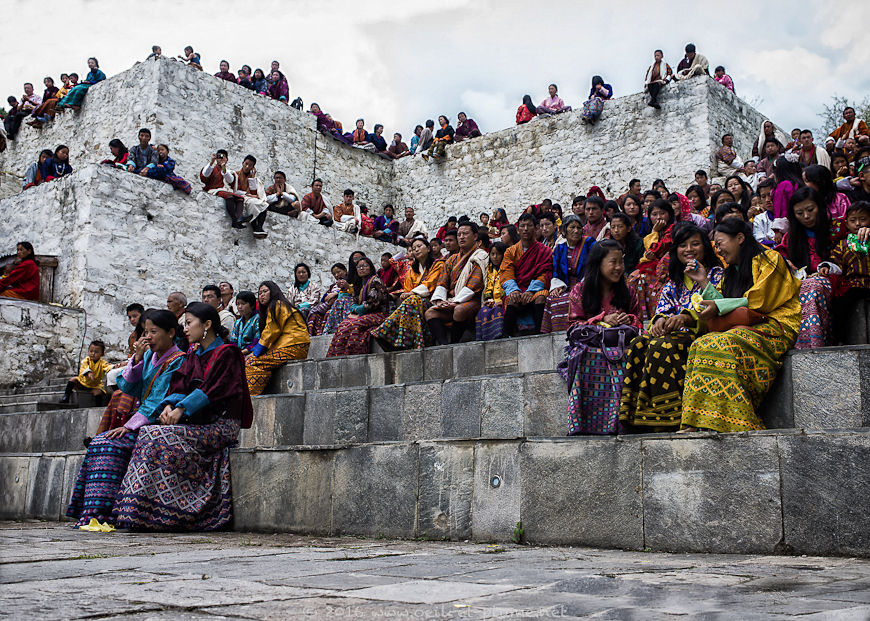
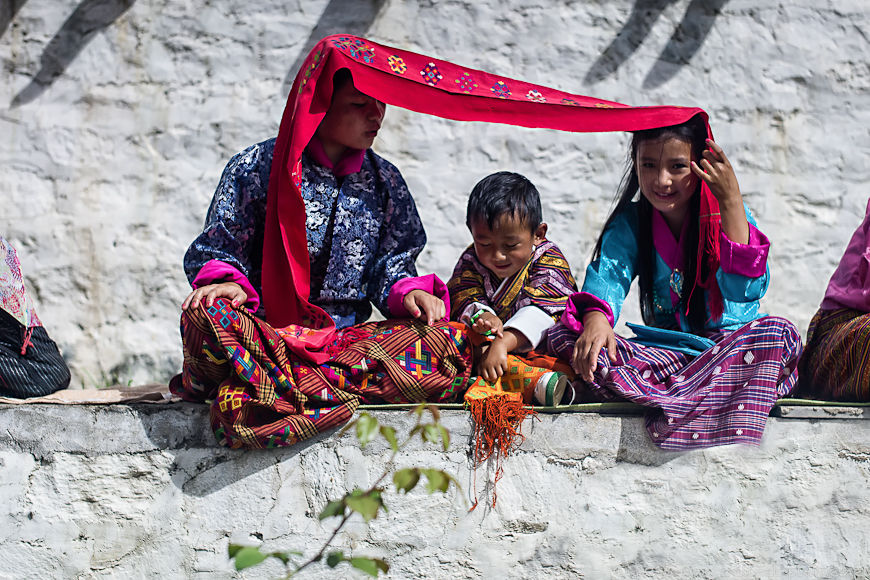

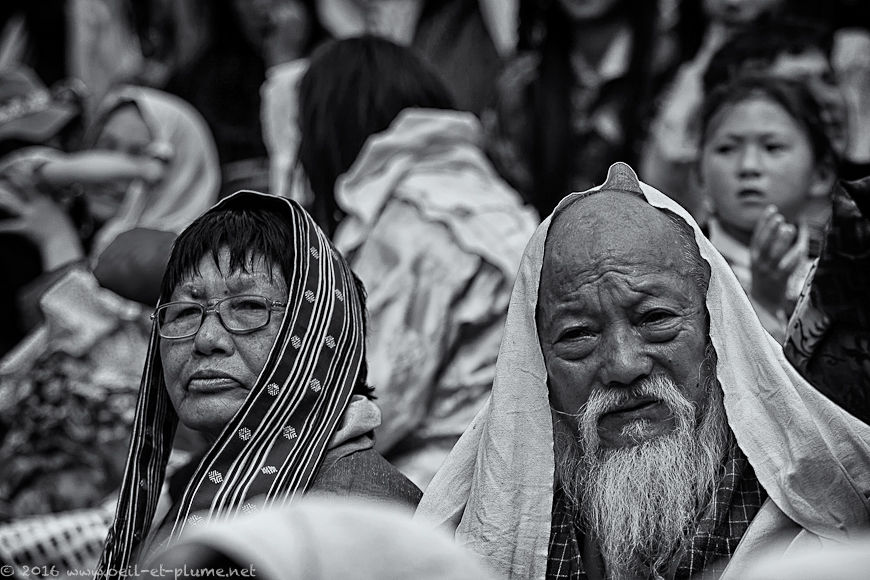
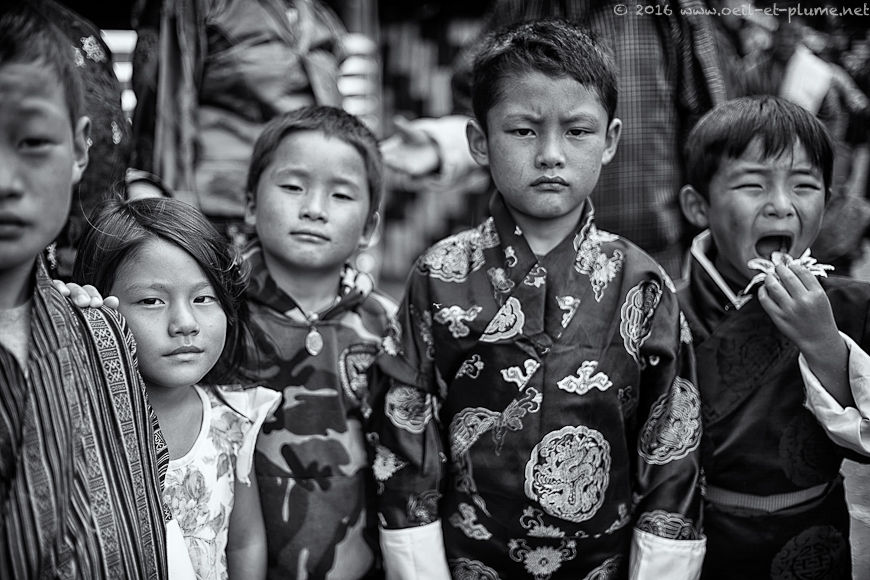
The religious dances constitute the highlight of the tshechus. The costumed, masked dances express moral teachings drawn upon the life of Guru Rinpoche and other saints.
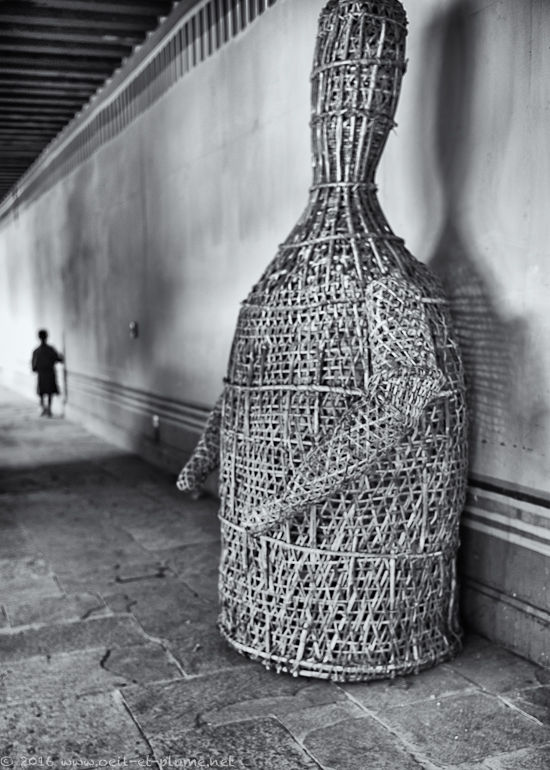
Black hat dances
On the second day of the tsechu is presented a twin performance – the black hat dance and the dance of the 21 black hats with drums. As those who watch both dances are believed to receive great spiritual blessings, you better continue reading then.
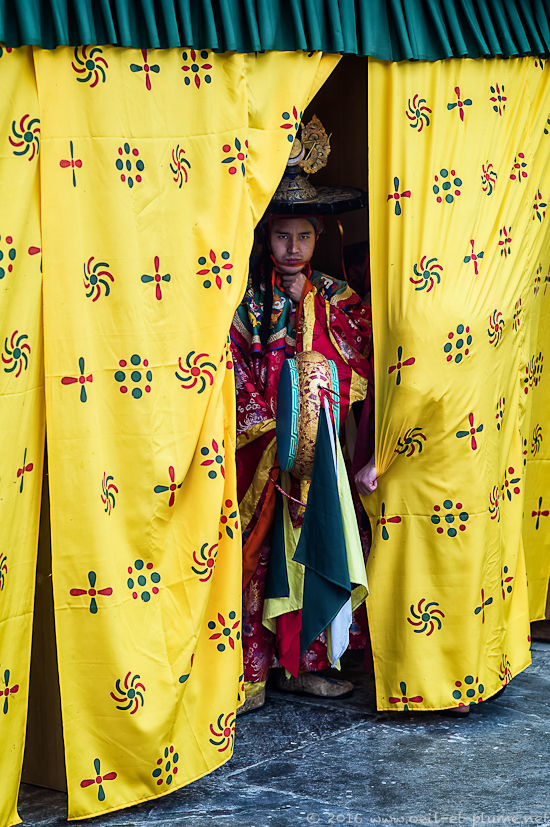
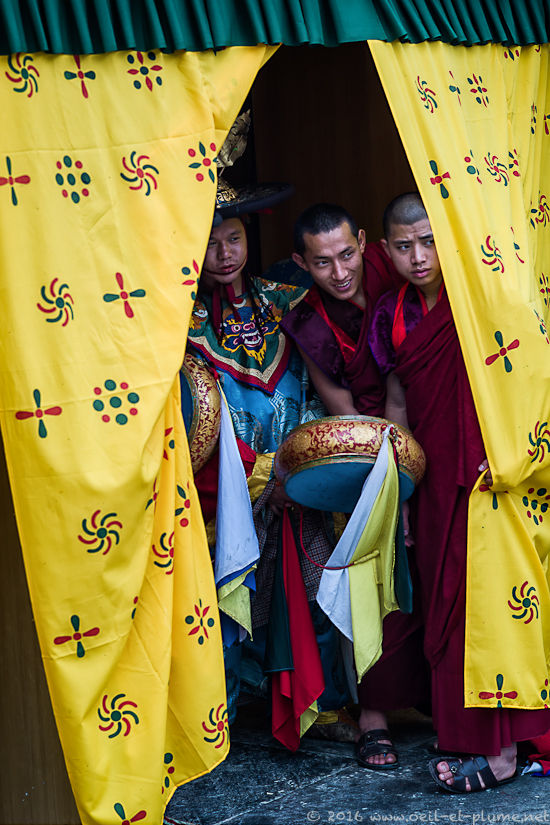
Black hat dancers stand ready in the backstage, waiting for a choir to end its performance and to clear the central yard. Buffoons called atsaras mingle with the singers, keen to tease the females with a wooden phallus to entertain the audience.
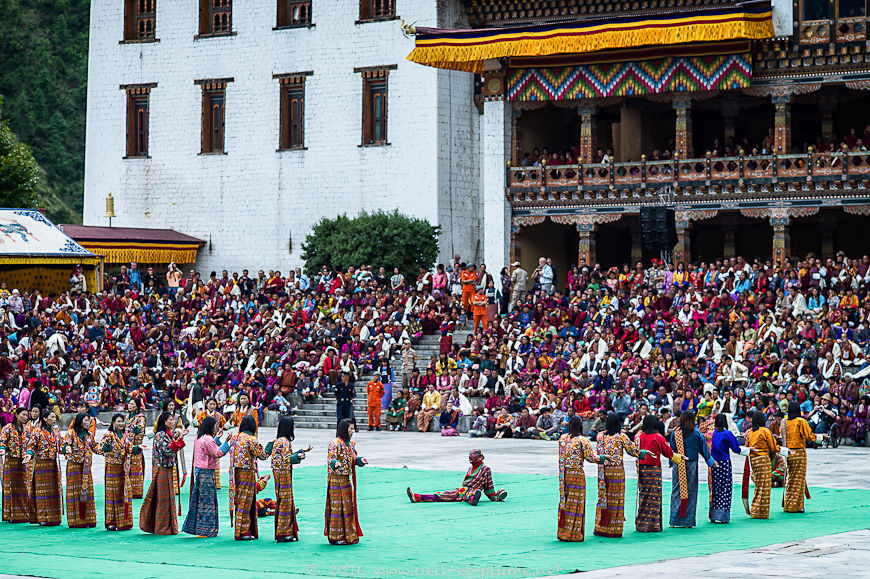
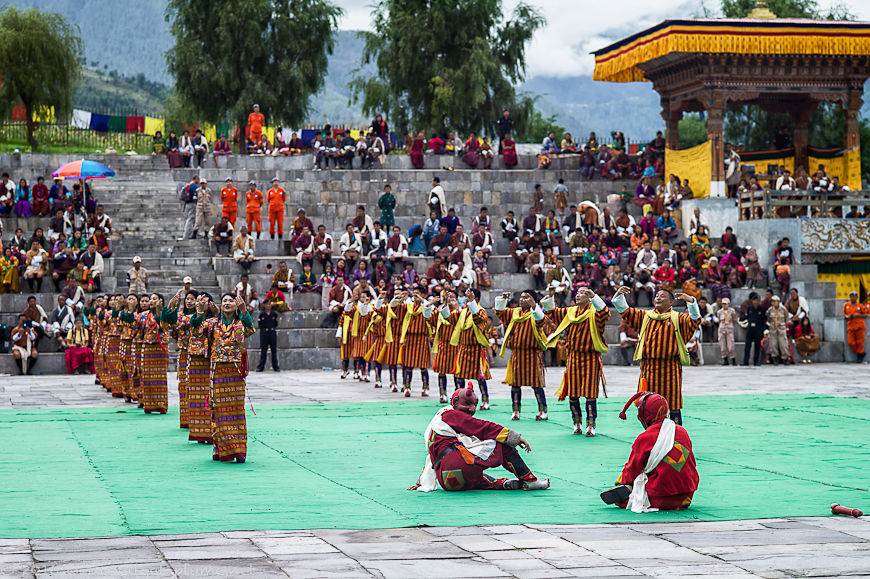
Time has come for the black hat dancers to present their performance. Let’s go.
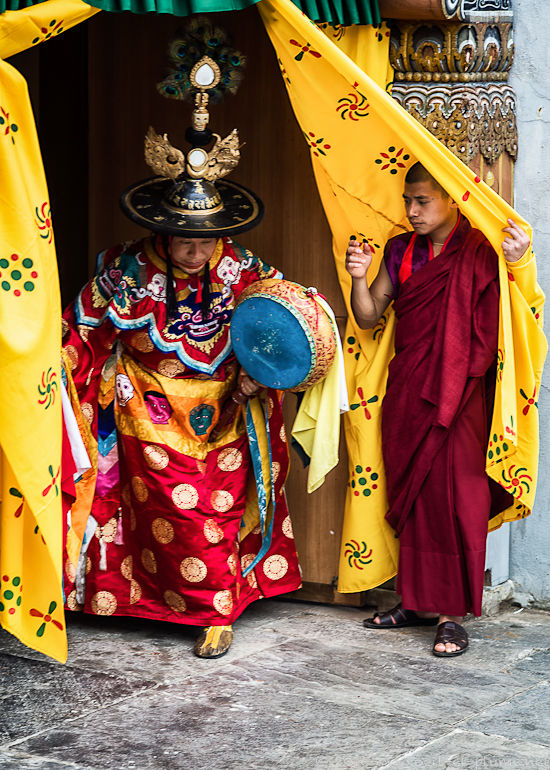
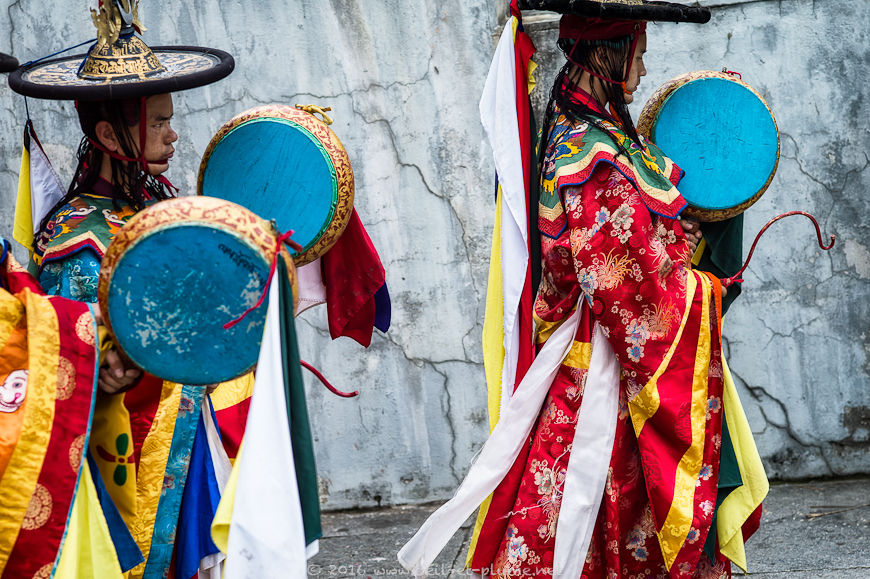
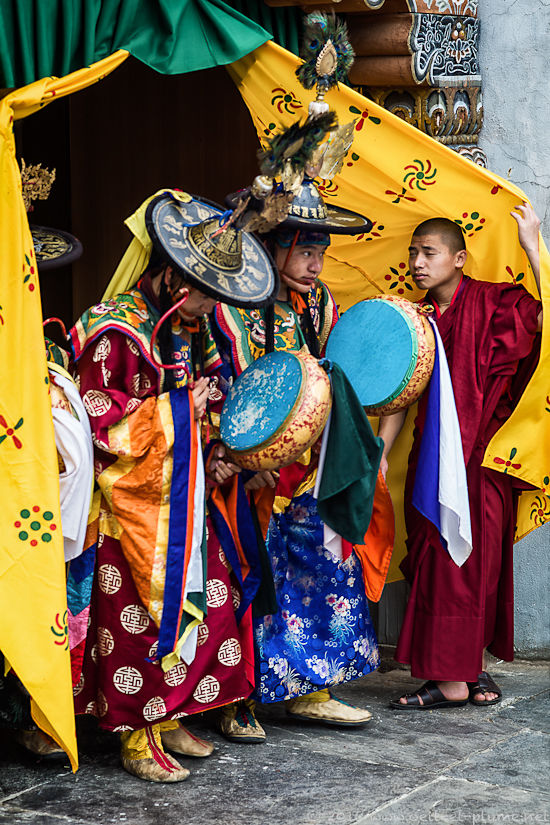
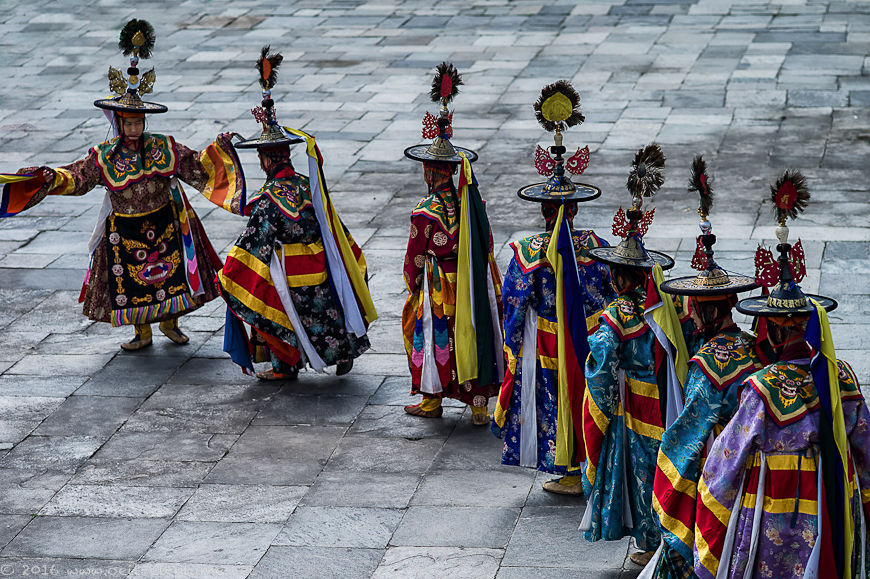
The black hat dances evoke two cornerstones of Bhutan’s culture : Buddhism and archery. They tell the legendary murder of the Tibetan king Langdarma in the 9th century. Adept of Bon belief, the ruler tries to wipe Buddhism out of his medieval kingdom. A Buddhist monk, Lhalung Pelgi Dorji, propose him to perform the black hat dance to entertain him. The king accepts.
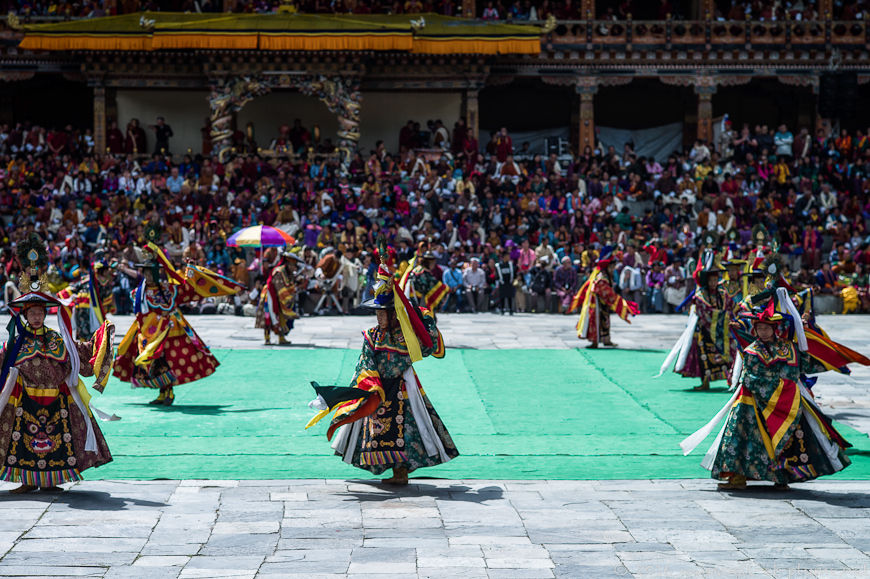
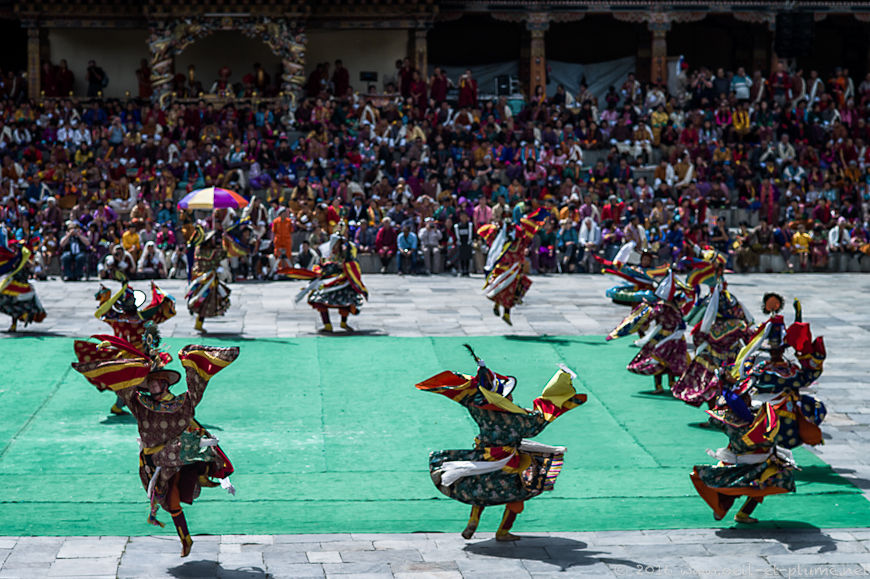
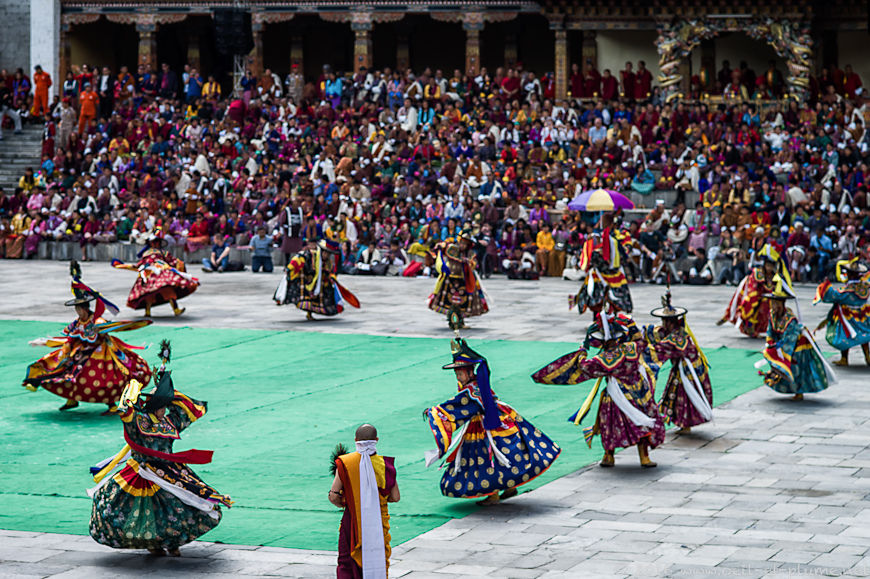
Feigning a bow before the ruler, the dancing monk draws a bow and an arrow hidden in the large sleeves of his ceremonial outfit, and kills the king. A civil war follows, leading to the disintegration of the Tibetan kingdom. No one, including a king, should oppose the spread of Buddhism, conclude both dances.
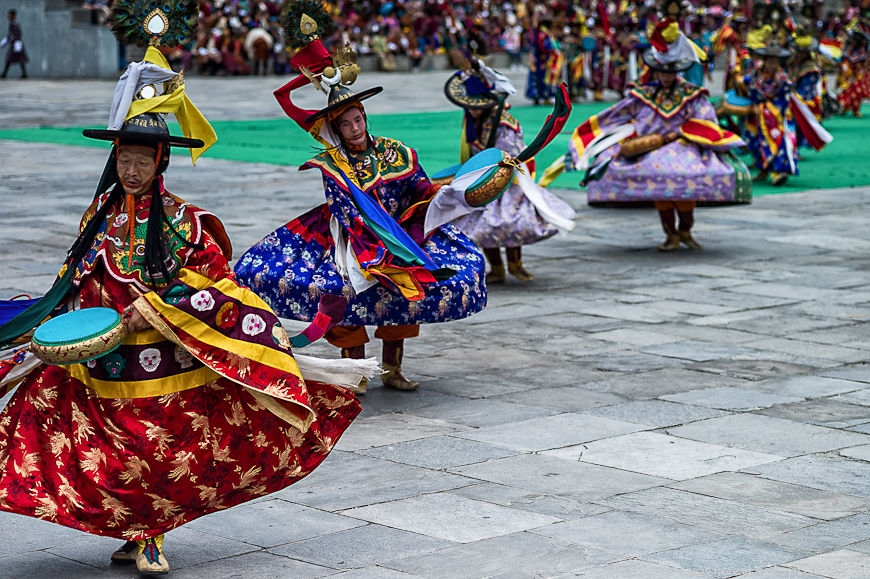
You should not expect a vibrant and thunderlike performance. The dancers, all male monks, move ceremoniously to the center of the yard. They execute a patient and well-orchestrated choregraphy steered by the beats and the sounds of drums, bells, gongs, conch-shell trumpets and horns. Their mental concentration remains high throughout their hour-long performance, approaching a trance status at times.
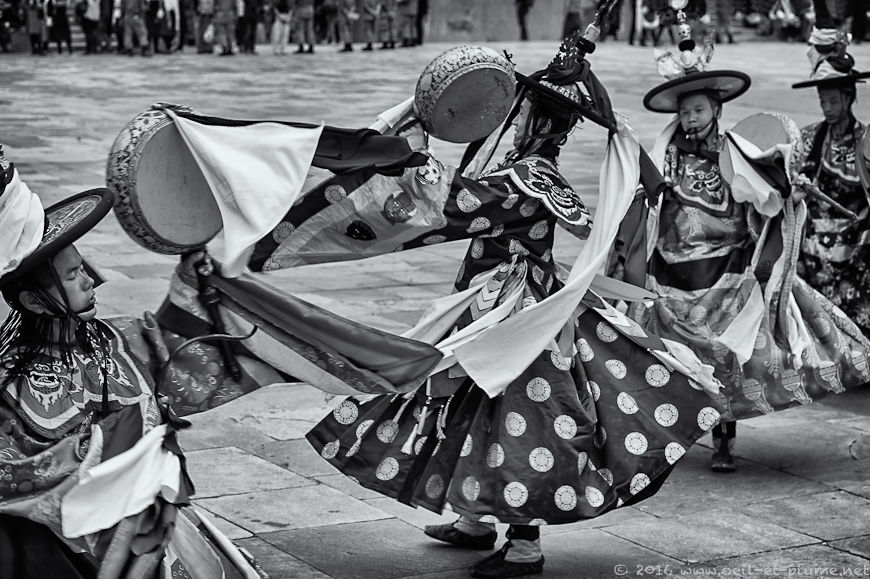
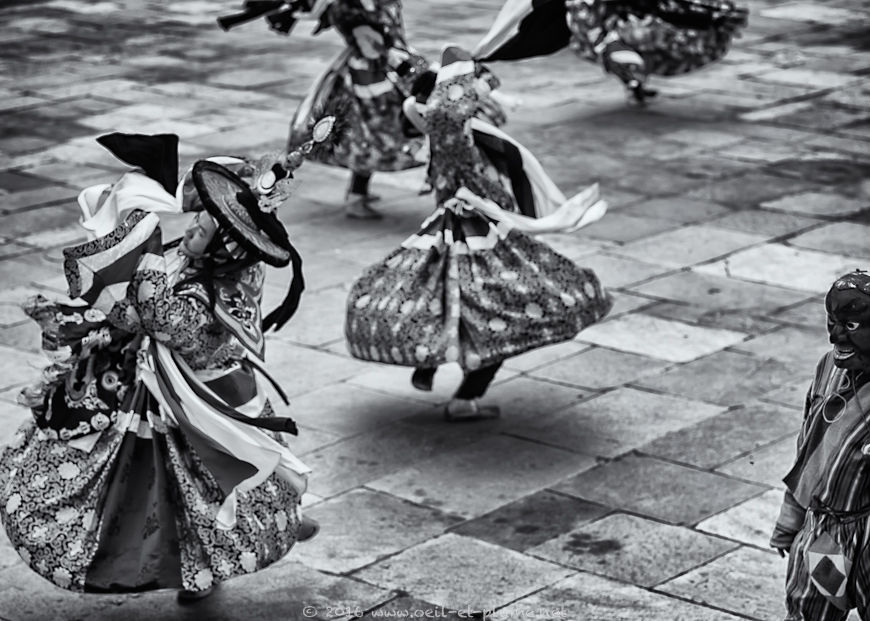
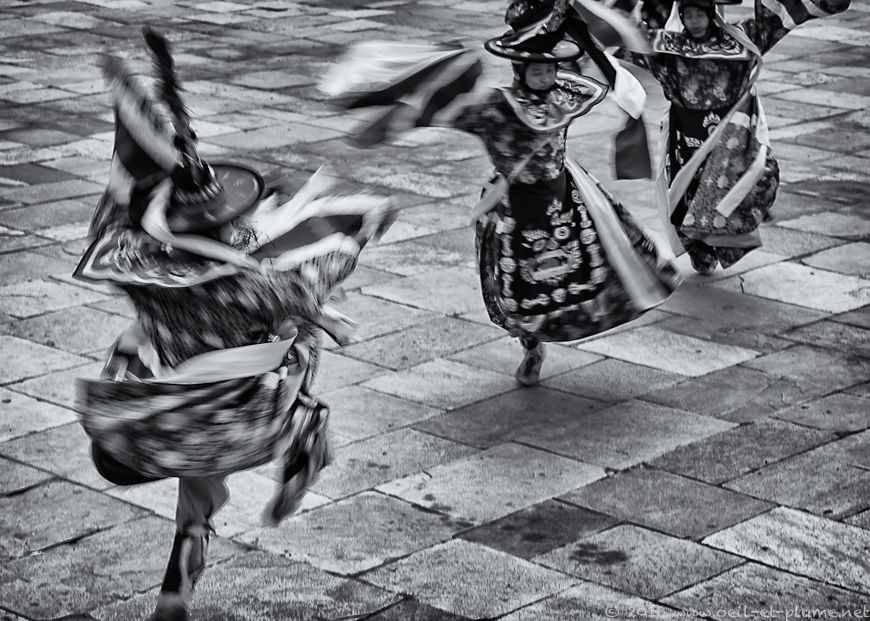
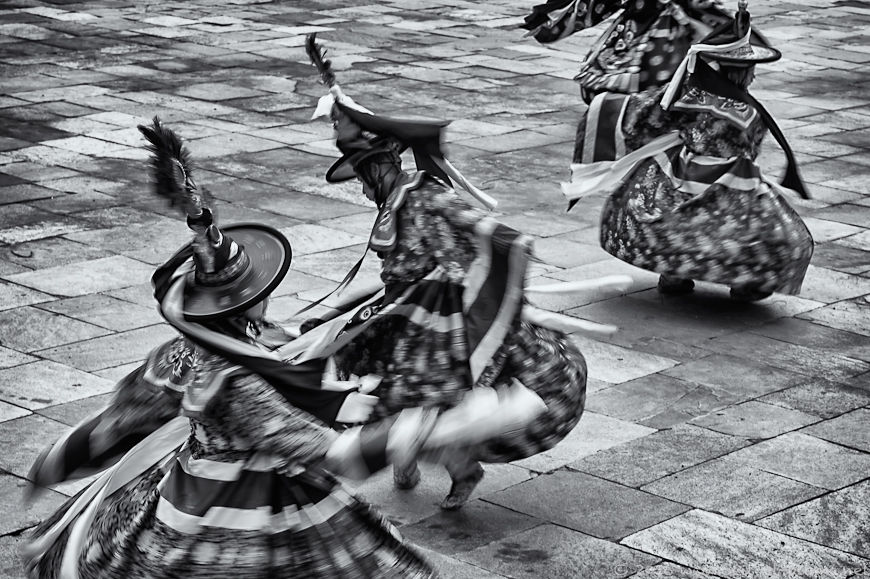
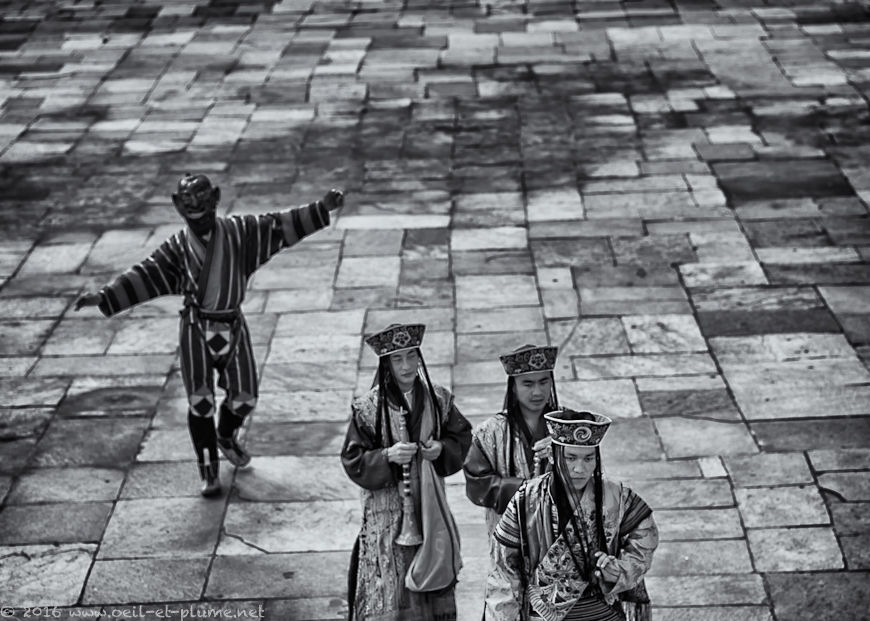
On their way out, the dancers roll out pirouettes in their beautifully coloured robes, as to greet the audience before vanishing behind the curtains of the backstage.
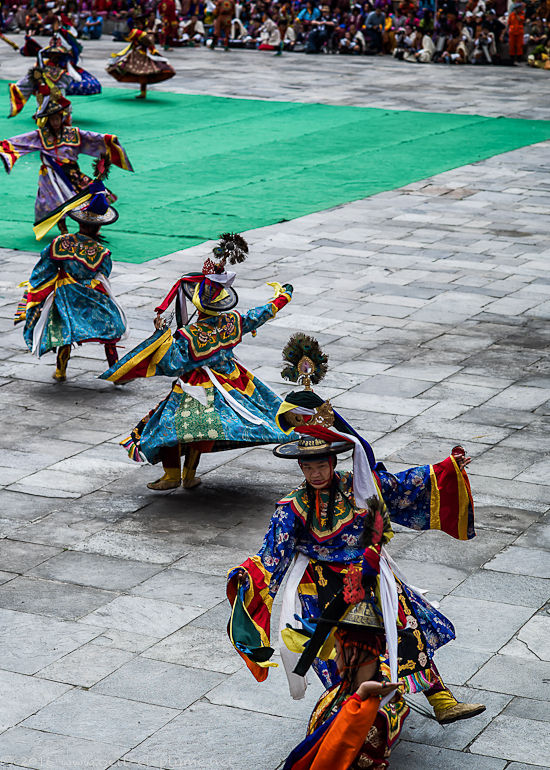
There are video footages available on the Internet and reporting on the Thimphu’s tshechu including on the black hat dances. However, they imperfectly capture the ambiance of the festival, made of a mixture of solemnity, spirituality and conviviality.
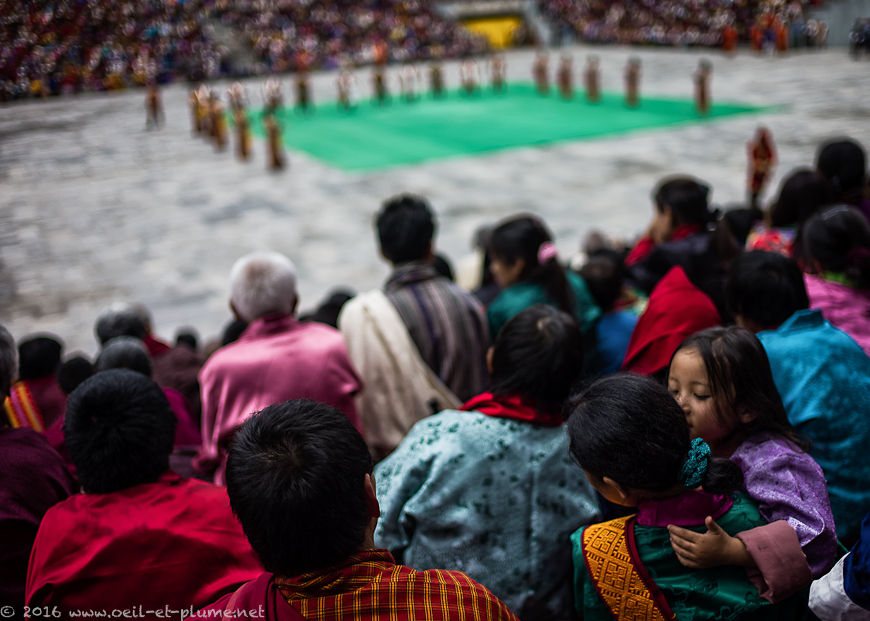
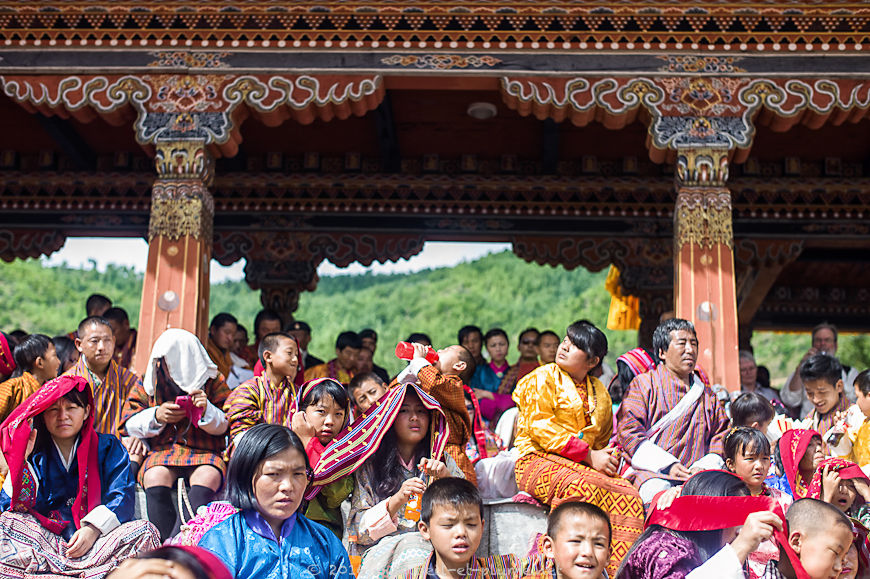
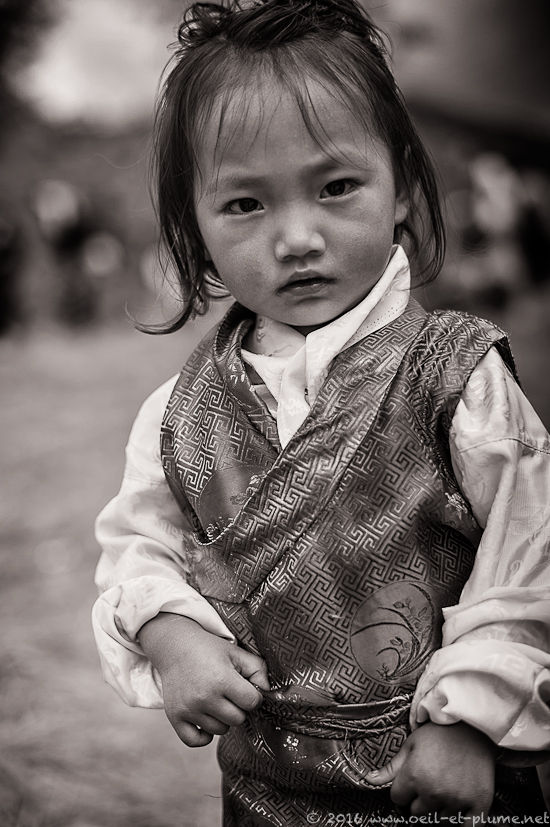
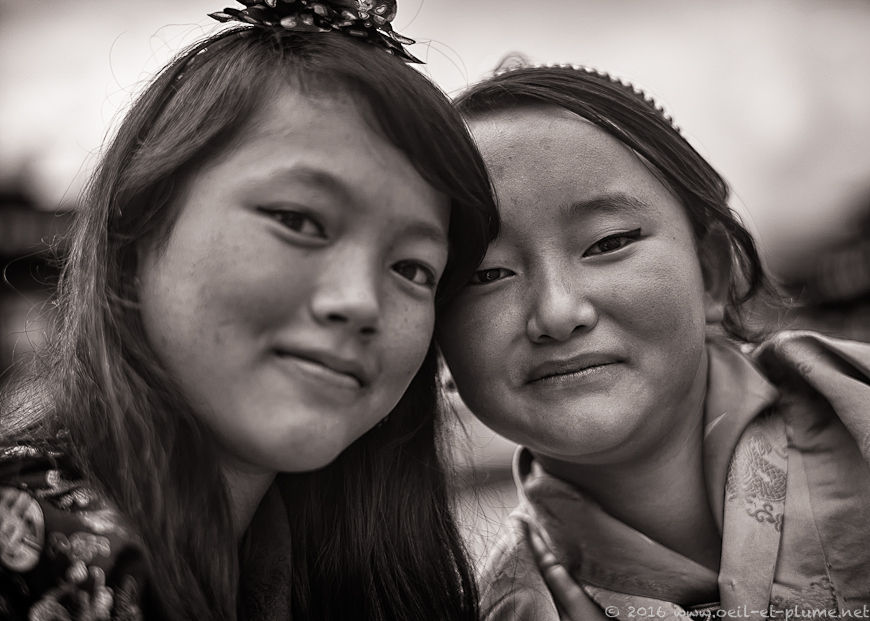
Bhutan’s tsechus are typical of Tibetan Buddhist traditions also observed in Tibet and in India’s Ladakh. To me, they epitomize a unique and invaluable culture in an increasingly globalised and culture-poor world.
Happy Swiss globetrotter
You remember my earlier discussion on the sources of collective and individual happiness. Natural ressources, sound governance, economic growth and social capital sustain happiness.
According to the 2015 World Happiness Report, Bhutan ranks 79th on the world’s list of happy countries to live in in 2012-2014. This is an honourable score for a developing country. Remembering the many smiling faces met in Thimphu, I have little doubt that tsechus contribute to Bhutan’s collective identity, pride and happiness.
Do you know which country stands first on the list ? … Switzerland.
Why on earth am I trotting the globe ?
Cheers,